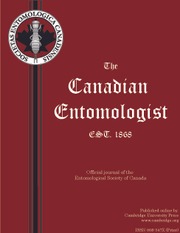Article contents
Further Studies on the Food-Gathering Behaviour of Bumble Bees (Hymenoptera: Apidae)1
Published online by Cambridge University Press: 31 May 2012
Extract
Brian (1954) discussed the evidence in the literature concerning whether the correlation between the length of the proboscis of a bumble bee and the length of the corolla tube of the flower it visits for nectar results from learned or innate behaviour. She hesitated to accept the views of Kugler (1943), who supported the ‘learned’ hypothesis and considered that the individual bumble bee is instinctively attracted to a flower by its colour, scent, etc., but must learn which flowers are suited to its bodily build, because he had done no work on bees raised in isolation and therefore known to be without foraging experience. The work of Cumber (1949), which reported that there were differences in proboscis lengths between individuals of a species that visited different flowers and which therefore also supported the learned hypothesis, was suspect because he gave no data on corolla lengths. Hobbs et al. (1961), who recorded the food-preferences of certain of the workers, queens, and males of honey, bumble, and leaf-cutter bees on an isolated experimental field containing plots of alfalfa, red clover, alsike clover, and sweetclover, concluded that the preference exhibited by a bee was linked with the ease with which it could gather nectar from a flower. They found, as did Cumber, that differences in prolboscis-lengths between individuals of a species resulted in preferences for flowers of different corolla-tube lengths, e.g., the queens of Bombus hunti Greene (mean length of proboscis 8.7 mm.) greatly preferred red clover, whereas the workers (m.l.p. 6.3 mm.) preferred sweetclover.
Information
- Type
- Articles
- Information
- Copyright
- Copyright © Entomological Society of Canada 1962
References
- 26
- Cited by

